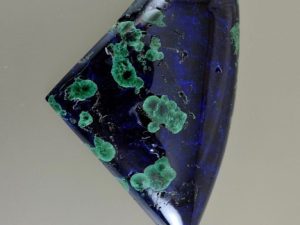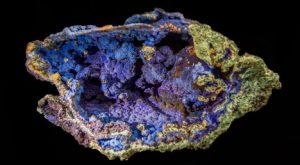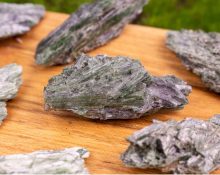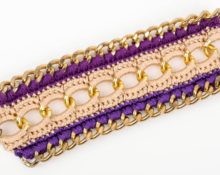
Azurite is a secondary copper mineral often found in oxidized zones of copper ore deposits. It usually occurs as tabular or prismatic crystals of a deep azure blue color. It is formed as a result of weathering of copper ore deposits.
Azurite is named after the Persian word “lazhward” for its characteristic blue color. It occurs in weathering zones of copper ore, usually in association with malachite.
This mineral is known for its bright colors and interesting shapes. There are over 45 known forms of azurite. It can be cut into cabochons and cut into gemstones, and can be used to make crafts. Azurite dust is toxic and should not be inhaled when cutting or polishing.
Azurite deposits are found in Australia, Chile, France, Mexico, Morocco, Namibia, the southwestern United States and Zaire. Samples of azurite can be seen at the Smithsonian Museum of Natural History.
History of azurite
Azurite has been used for thousands of years as a decorative stone for jewelry and crafts. Additionally, the early Egyptians believed that azurite had the ability to communicate with spirits.
It has been used for many centuries as a pigment to create a unique blue color and was widely used in painting during the Middle Ages and Renaissance in Europe.
During this period, azurite was used first in tempera and fresco painting, and then in oil painting. To obtain azurite pigment, a mass of minerals were collected and ground into powder. This powder was then washed and passed through a sieve.
The crushed azurite grains were separated by size. Heavier, larger grains were used to create dark blue pigment, and smaller grains were used to create lighter shades.
To create a solid blue color, several layers of azurite pigment were required, and this layering of layer upon layer of small azurite fragments formed a crystalline crust with a deep blue hue and a subtle luster.
Over a long period of time, the blue color changed to greener shades under the influence of copper contained in the mineral. This natural variation is called a pseudomorph, and the green color is the related copper mineral malachite.
This change can be seen in samples of the mineral and in old paintings that used azurite pigments. One of the most notable works of art affected by the change from azurite to malachite is Raphael's Madonna and Child Surrounded by Saints.

How is azurite formed?
Azurite is not a common or abundant mineral.Azurite is a secondary mineral that typically forms when carbon dioxide-laden water seeps into the ground and reacts with subsurface copper ores. The carbonic acid of these waters dissolves a small amount of copper from the ore.
Dissolved copper is transported with water until it enters a new geochemical environment. This new environment may be a place where water chemistry or temperature changes, or a place where water evaporates. Under favorable conditions, the mineral azurite can form. If suitable conditions persist for a long time, significant accumulations of azurite can form.
Precipitation of azurite occurs in pore spaces, cracks and cavities of subsurface rocks. Azurite formed as a result of precipitation has a massive or nodular shape. In rare cases, azurite can occur in the form of stalactite and botryoid formations.
Azurite is popular among mineral collectors due to its deep blue color, stunning monoclinic crystal shape, and interesting structure.
Azurite's instability poses a problem for mineral collectors because if this mineral is exposed to heat or high humidity, its surface will begin to weather and become dull, faded, or greenish in appearance.
Valuable specimens should be stored in closed collection boxes with limited air circulation, in the dark and at a cool, stable temperature.


 0
0





